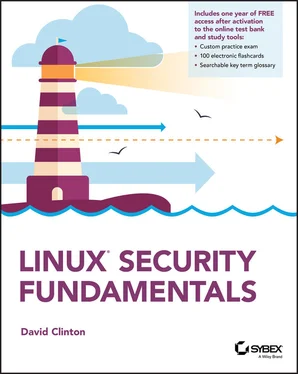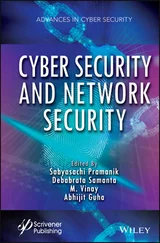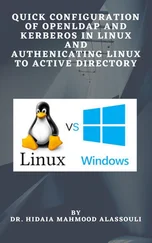David Clinton - Linux Security Fundamentals
Здесь есть возможность читать онлайн «David Clinton - Linux Security Fundamentals» — ознакомительный отрывок электронной книги совершенно бесплатно, а после прочтения отрывка купить полную версию. В некоторых случаях можно слушать аудио, скачать через торрент в формате fb2 и присутствует краткое содержание. Жанр: unrecognised, на английском языке. Описание произведения, (предисловие) а так же отзывы посетителей доступны на портале библиотеки ЛибКат.
- Название:Linux Security Fundamentals
- Автор:
- Жанр:
- Год:неизвестен
- ISBN:нет данных
- Рейтинг книги:3 / 5. Голосов: 1
-
Избранное:Добавить в избранное
- Отзывы:
-
Ваша оценка:
- 60
- 1
- 2
- 3
- 4
- 5
Linux Security Fundamentals: краткое содержание, описание и аннотация
Предлагаем к чтению аннотацию, описание, краткое содержание или предисловие (зависит от того, что написал сам автор книги «Linux Security Fundamentals»). Если вы не нашли необходимую информацию о книге — напишите в комментариях, мы постараемся отыскать её.
The Sybex™ method for teaching Linux® security concepts
Interactive learning environment
www.wiley.com/go/sybextestprep Linux Security Fundamentals
Linux Security Fundamentals
Linux Security Fundamentals — читать онлайн ознакомительный отрывок
Ниже представлен текст книги, разбитый по страницам. Система сохранения места последней прочитанной страницы, позволяет с удобством читать онлайн бесплатно книгу «Linux Security Fundamentals», без необходимости каждый раз заново искать на чём Вы остановились. Поставьте закладку, и сможете в любой момент перейти на страницу, на которой закончили чтение.
Интервал:
Закладка:
Chapter 2: What Are Vulnerabilities and Threats?Here you’ll discover the scope of the many classes of threats against your infrastructure, including digital espionage, stolen credentials, and malware.
Chapter 3: Controlling Access to Your AssetsYour first line of defense against the bad guys is the outer edge of your property. So, learning to manage physical and network access to your resources is a big deal.
Chapter 4: Controlling Network ConnectionsBefore you can effectively audit and secure your networks, you’ll need to understand how IP/TCP networking actually works. This chapter will introduce you to both general networking administration and the basics of network security.
Chapter 5: Encrypting Your Data at RestWhat can I say? Obscuring your important data stores from prying eyes is a critical component of security. Learn why, how, and where it should be done.
Chapter 6: Encrypting Your Moving DataIn this chapter, you’ll learn about website and email encryption, along with the care and feeding of virtual private networks (VPNs).
Chapter 7: Risk AssessmentYou’ll never know how secure your infrastructure is until it comes under attack. Now who would you prefer launches this first attack? This is something you’d rather want to do yourself through the services of vulnerability scanners and penetration testers.
Chapter 8: Configuring System Backups and MonitoringDespite all your best efforts, you’re going to lose important data at some point. If you’re properly backed up, then you’re singing. And the sooner you find out there’s bad stuff happening, the happier your song will be.
Chapter 9: Resource Isolation Design PatternsThe final chapter will discuss some important security design tools, such as firewalls, sandboxes, and OS access control software.
Interactive Online Learning Environment and Test Bank
We’ve put together some really great online tools to help you absorb what you’ll learn even better.
The online section includes the following:
QuestionsMany review questions are provided throughout this book and included online as part of the test bank. We’ve also also a practice exam online. Use these tools to test your knowledge of Linux security. The online test bank runs on multiple devices.
FlashcardsThe online text bank includes 100 flashcards specifically written to test your knowledge. Questions are provided in digital flashcard format (a question followed by a single correct answer). You can use the flashcards to reinforce your learning.
 |
Go to www.wiley.com/go/sybextestprepto register and gain one year of FREE access after activation to this interactive online learning environment and test bank with study tools. |
Chapter 1 Using Digital Resources Responsibly
 “With great power comes great responsibility.”
“With great power comes great responsibility.”
Words of wisdom. That’s the message displayed for administrators when they log in for the first time to many Linux distributions. Who said those words first? Aristotle? Kant? Nope. Spider-Man’s uncle. But hey, accept the truth from any source.
While we’ll discuss protecting yourself from attack at length later in the book, this chapter is all about responsibilities. It’s about your responsibilities both as a consumer of computer technologies and as an administrator of computer technologies. It’s your job to make sure nothing you do online or with your devices causes harm to anyone’s assets.
How is all this relevant to the world of information technology (IT) and, specifically, to IT security? Computers amplify your strengths. No matter how much you can remember, how fast you can calculate, or how many people’s lives you can touch, it’ll never come close to the scope of what you can do with a computing device and a network. So, given the power inherent in digital technologies and the depth of chaos such power can unleash, you need to understand how it can all go wrong before you set off to use it for good.
The rest of this chapter will explore the importance of considering how your actions can impact people’s personal and property rights and privacy and how you can both ensure and assess the authenticity of online information.
I’m not a lawyer and this book doesn’t pretend to offer legal advice, so we’re not going to discuss some of the more esoteric places where individual rights can come into conflict with events driven by technology. Instead we’ll keep it simple. People should be able to go about their business and enjoy their interactions with each other without having to worry about having physical, financial, or emotional injury imposed on them. And you should be ready to do whatever is necessary to avoid or prevent such injuries.
Protecting Personal Rights
These days, the greatest technology-based threats to an individual’s personal well-being will probably exist on one or another social media platform. Facebook, Twitter, LinkedIn, and other online sites present opportunities for anyone to reach out to and communicate with millions or even billions of other users. This can make it possible to build entire businesses or social advocacy movements in ways that would have been unthinkable just a few years back. But, as we all now know, it also makes it possible to spread dangerous scams, political mischief, and social conflict.
As the man said, “With great power comes great responsibility.” Therefore, you need to be conscious of the possible impact of any interaction you undertake. This will be true not only for your use of your own social media or email/messaging accounts but also for any interactions taking place on sites or platforms you administrate. You could, for instance, be held legally responsible for anonymous comments left on your blog or for the use of email accounts belonging to your organization. It can be a hard balance to achieve. Are your policies unnecessarily allowing damaging content to be published or, alternatively, unfairly restricting innocuous content?
A helpful tool for maintaining perspective in these areas is to apply the grandmother test . What’s that? Before posting a message or comment on any online forum, take a minute to read it over one or two more times and then ask yourself, “Would both my grandmothers approve of what I’ve written? Is there anything that would make them uncomfortable?” In other words, ask yourself whether anyone could reasonably feel threatened or bullied by what you’re about to publish. The bottom line is to make generous use of common sense and goodwill.
With typical attention to such details, the social media community has come up with new names to describe each of the nastiest online threats. You should, unfortunately, be familiar with each of them.
CyberstalkingStalking isn’t specific to online activities, but that doesn’t make it any less frightening. In general terms, a stalker persistently follows and observes a target, often with the goal of forcing an unwanted reaction. In the online world, cyberstalking can include electronic monitoring of a target’s online accounts and activities. Harassing cyberstalking can escalate beyond mere monitoring to include threats, slander, and identity theft.
Читать дальшеИнтервал:
Закладка:
Похожие книги на «Linux Security Fundamentals»
Представляем Вашему вниманию похожие книги на «Linux Security Fundamentals» списком для выбора. Мы отобрали схожую по названию и смыслу литературу в надежде предоставить читателям больше вариантов отыскать новые, интересные, ещё непрочитанные произведения.
Обсуждение, отзывы о книге «Linux Security Fundamentals» и просто собственные мнения читателей. Оставьте ваши комментарии, напишите, что Вы думаете о произведении, его смысле или главных героях. Укажите что конкретно понравилось, а что нет, и почему Вы так считаете.












